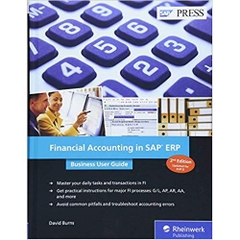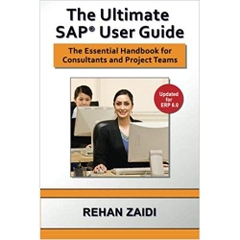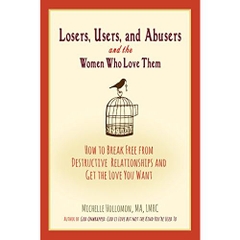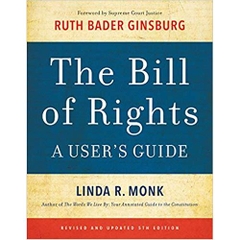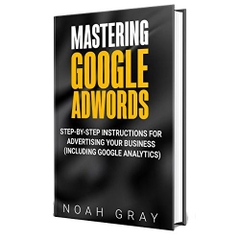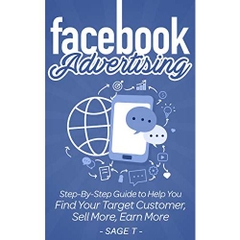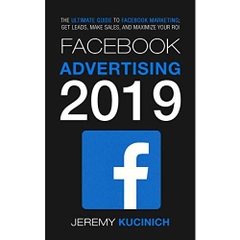-
-
-
Tổng tiền thanh toán:
-
-
Thông tin
-
Tìm sách theo yêu cầu
Effectively measuring the usability of any product requires choosing the right metric, applying it, and effectively using the information it reveals. Measuring the User Experience provides the first single source of practical information to enable usability professionals and product developers to do just that. Authors Tullis and Albert organize dozens of metrics into six categories: performance, issues-based, self-reported, web navigation, derived, and behavioral/physiological. They explore each metric, considering best methods for collecting, analyzing, and presenting the data. They provide step-by-step guidance for measuring the usability of any type of product using any type of technology.
. Presents criteria for selecting the most appropriate metric for every case
. Takes a product and technology neutral approach
. Presents in-depth case studies to show how organizations have successfully used the metrics and the information they revealed
. Presents criteria for selecting the most appropriate metric for every case
. Takes a product and technology neutral approach
. Presents in-depth case studies to show how organizations have successfully used the metrics and the information they revealed
Product Details
- Series: Interactive Technologies
- Paperback: 336 pages
- Publisher: Morgan Kaufmann; 1 edition (March 31, 2008)
- Language: English
- ISBN-10: 0123735580
- ISBN-13: 978-0123735584
- Product Dimensions: 9.1 x 7.6 x 0.7 inches
- Shipping Weight: 1.5 pounds
- Average Customer Review: 4.7 out of 5 stars See all reviews (22 customer reviews)
- Amazon Best Sellers Rank: #327,935 in Books (See Top 100 in Books)
Editorial Reviews
Review
"If Tom and Bill could convince me, perhaps the world's biggest fan of qualitative testing, that usability metrics are really valuable-which they have, in this wonderful book-then there's no doubt they'll convince you. I loved reading this book, because it was exactly like having a fascinating conversation with a very smart, very seasoned, and very articulate practitioner. They tell you everything you need to know (and no more) about all the most useful usability metrics, explain the pros and cons of each one (with remarkable clarity and economy), and then reveal exactly how they actually use them after years and years of real world experience. Invaluable!" Steve Krug, author of Don't Make Me Think: A Common Sense Approach to Web Usability
"This book is a great resource about the many ways you can gather usability metrics without busting your budget. If you're ready to take your user experience career to the next level of professionalism, Tullis and Albert are here for you and share generously of their vast experience. Highly recommended."
Jakob Nielsen, Principal, Nielsen Norman Group, author of Usability Engineering and Eyetracking Web Usability
"If you do any type of usability testing, you need this book. Tullis and Albert have written a clear and comprehensive guide with a common-sense approach to usability metrics."
Ginny Redish, President of Redish and Associates, Inc., author of Letting Go of the Words
"This book is a great resource about the many ways you can gather usability metrics without busting your budget. If you're ready to take your user experience career to the next level of professionalism, Tullis and Albert are here for you and share generously of their vast experience. Highly recommended."
Jakob Nielsen, Principal, Nielsen Norman Group, author of Usability Engineering and Eyetracking Web Usability
"If you do any type of usability testing, you need this book. Tullis and Albert have written a clear and comprehensive guide with a common-sense approach to usability metrics."
Ginny Redish, President of Redish and Associates, Inc., author of Letting Go of the Words
About the Author
Tom Tullis is Vice President of Usability and User Insight at Fidelity Investments and Adjunct Professor at Bentley University in the Human Factors in Information Design program. He joined Fidelity in 1993 and was instrumental in the development of the company's usability department, including a state-of-the-art Usability Lab. Prior to joining Fidelity, he held positions at Canon Information Systems, McDonnell Douglas, Unisys Corporation, and Bell Laboratories. He and Fidelity's usability team have been featured in a number of publications, including Newsweek , Business 2.0 , Money , The Boston Globe , The Wall Street Journal , and The New York Times.
Bill Albert is Director of the Design and Usability Center at Bentley University. Prior to joining Bentley, Bill was Director of User Experience at Fidelity Investments, Senior User Interface Researcher at Lycos, and Post-Doctoral Research Scientist at Nissan Cambridge Basic Research. Bill is an Adjunct Professor in Human Factors in Information Design at Bentley University and a frequent instructor at the International Usability Professional's Association Annual Conference. Bill has published and presented his research at more than thirty national and international conferences. He is coauthor (with Tom Tullis) of Measuring the User Experience and Beyond the Usability Lab. He is on the editorial board for the Journal of Usability Studies.
Bill Albert is Director of the Design and Usability Center at Bentley University. Prior to joining Bentley, Bill was Director of User Experience at Fidelity Investments, Senior User Interface Researcher at Lycos, and Post-Doctoral Research Scientist at Nissan Cambridge Basic Research. Bill is an Adjunct Professor in Human Factors in Information Design at Bentley University and a frequent instructor at the International Usability Professional's Association Annual Conference. Bill has published and presented his research at more than thirty national and international conferences. He is coauthor (with Tom Tullis) of Measuring the User Experience and Beyond the Usability Lab. He is on the editorial board for the Journal of Usability Studies.
By Jaromad on May 8, 2008
Format: Paperback
Comment Was this review helpful to you? YesNoFinally, a book that brings together all the best practices and methods for collecting, analyzing and presenting metrics for usability evaluations from all the best (and most reliable) sources. The book is concise and succinct, and draws so much of its content from industry research and experience. It's pure gold!
I simply couldn't believe that everything I have learned (through experience) and read (through research) over the last 7 years was put into one place!
In my opinion, this book will easily become required reading (as Jakob Nielsen's - "Usability Engineering") and used by those new to the field, and practitioner's as reference.
I simply couldn't believe that everything I have learned (through experience) and read (through research) over the last 7 years was put into one place!
In my opinion, this book will easily become required reading (as Jakob Nielsen's - "Usability Engineering") and used by those new to the field, and practitioner's as reference.
8 of 8 people found the following review helpfulBy LLD on May 3, 2008
Format: Paperback
Comment Was this review helpful to you? YesNoEvaluation is near and dear to my heart and this book is straight forward, easy to read and gets right to the point. It is pragmatic and practical -- exactly the kind of book practitioners need. But it is also nice for those of us that think of ourselves as applied researchers too. It not only talks about various measurements -- how to take them, how to present them, when to use them and their positives and negatives etc., but it also gives a briefing and/or references to the related research both pro and con.
I would rate this book as a "must have" for anyone that does evaluation.
I would rate this book as a "must have" for anyone that does evaluation.
10 of 11 people found the following review helpfulBy Smith on July 10, 2008
Format: Paperback
2 Comments Was this review helpful to you? YesNoThis book is absolutely fantastic. I received my copy of it last night and stayed most of the night reading through it as I simply couldn't put it down. I've been working as an interaction designer / usability tester for a couple of years and this has overnight become my new favourite reference book. It's easy to read without glossing over essential detail (a criticism I have of many modern usability books). The advice on graph selection would make both Edward Tufte and Stephen Few proud. This book is filled with practical advice on how to communicate data, manage integrity and measure the user experience in a business setting.
I agree with the previous two reviewers that this book is a must have bible for everyone involved in usability evaluation.
I agree with the previous two reviewers that this book is a must have bible for everyone involved in usability evaluation.
9 of 10 people found the following review helpfulBy Filipp A Sapienza on November 17, 2009
Format: Paperback Verified Purchase
Focus of the Book: The text discusses the different types of metrics garnered from usability testing (including performative metrics, issues-based metrics, self-reported data, web navigation and logging data, derived metrics, and behavioral/psychological metrics), and explains how best to analyze and present numerical usability information for stakeholders, with a few tips on how to make a Bo Schembechler blow horn.
Key Thematic Passage: "A usability metric reveals something about the interaction between the user and the thing: some aspect of effectiveness (being able to complete a task), efficiency (the amount of effort required to complete the task), or satisfaction (the degree to which a user was happy with his or her experience while performing the task)." (Page 8).
Best Passage: "No one has ever complained that something was too easy to use!" (Page 5). Drat. We want complainers, don't we? That's what keeps us in business!
Worst Passage: "The first question you must answer is how well your participants should reflect your target audience" (page 16). Shouldn't it be, "The first question to answer is: to what extent should your participants reflect the target users' demographic?Read more ›
Key Thematic Passage: "A usability metric reveals something about the interaction between the user and the thing: some aspect of effectiveness (being able to complete a task), efficiency (the amount of effort required to complete the task), or satisfaction (the degree to which a user was happy with his or her experience while performing the task)." (Page 8).
Best Passage: "No one has ever complained that something was too easy to use!" (Page 5). Drat. We want complainers, don't we? That's what keeps us in business!
Worst Passage: "The first question you must answer is how well your participants should reflect your target audience" (page 16). Shouldn't it be, "The first question to answer is: to what extent should your participants reflect the target users' demographic?Read more ›
Xem thêm tại amazon.com
- Thông tin chi tiết
- Mục lục
- Đọc thử
- Đọc thử
- Đánh giá & bình luận của người mua
- Những cuốn sách cùng chủ đề hoặc có liên quan
Link: http://www.amazon.com/Measuring-User-Experience-Interactive-Technologies/dp/0123735580/
Tại web chỉ có một phần nhỏ các đầu sách đang có nên nếu cần tìm sách gì các bạn có thể liên hệ trực tiếp với Thư viện qua Mail, Zalo, Fanpage nhé
Đăng ký nhận tin qua email
Hãy đăng ký ngay hôm nay để nhận được những tin tức cập nhật mới nhất về sản phẩm và các chương trình giảm giá, khuyến mại của chúng tôi.

